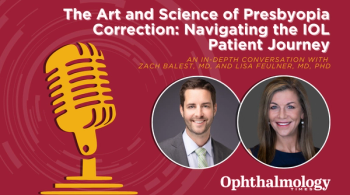
Multiple factors guide IOL selection in eyes without adequate capsular bag support
When it comes to pseudophakic correction for eyes where there is no capsule fixation, a surgeon should select an IOL and fixation technique based on personal experience, skill, and comfort level while also taking into account the specific clinical presentation of the patient, said Roger F. Steinert, MD.
When it comes to pseudophakic correction for eyes where there is no capsule fixation, a surgeon should select an IOL and fixation technique based on personal experience, skill, and comfort level while also taking into account the specific clinical presentation of the patient, said Roger F. Steinert, MD.
"Currently, there is no clear evidence to support the superiority of any of the three IOL options in the absence of adequate capsular support," stated Dr. Steinert, professor of ophthalmology, University of California, Irvine.
He reviewed the advantages and disadvantages of anterior chamber IOLs, iris-sutured posterior chamber IOLs, and trans-scleral sutured posterior chamber IOLs. In addition, he summarized the findings and conclusions from six published studies that represent the only ones suitably designed to allow a comparative statistical analysis of different approaches.
Dr. Steinert pointed out that the limited literature on this subject precludes adequate evaluation of the available IOL choices. However, it is clear that extensive vitrectomy and capsular loss is associated with poorer outcomes independent of IOL type and fixation technique. That relationship may account for the "bad rap" carried by anterior chamber IOLs.
"There were bad designs leading to complications with these lenses in the past, but the technology has improved and has a long-term track record," Dr. Steinert said. "Yet, these devices are mainly used in complex cases that are predisposed to higher rates of complications. Therefore, we have to consider whether the outcomes associated with anterior chamber IOLs are a reflection of the device or where and how they are used."
Newsletter
Don’t miss out—get Ophthalmology Times updates on the latest clinical advancements and expert interviews, straight to your inbox.


















































.png)


